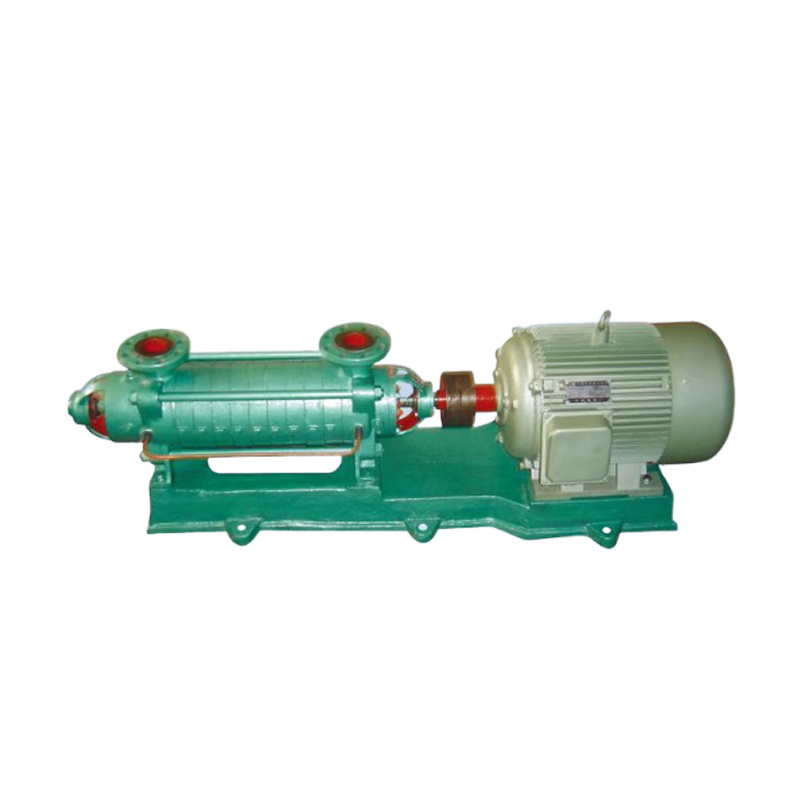Understanding Multistage Pumps: A Comprehensive Guide
Jul 04,2025

Multistage pumps are specialized centrifugal pumps designed to handle high pressure and flow requirements by incorporating multiple impellers. Each impeller, or stage, increases the pressure of the fluid being pumped, enabling the pump to move liquids over long distances or to significant heights. This feature makes multistage pumps particularly suitable for a variety of industrial applications, from water supply systems to chemical processing.
The design of a multistage pump typically consists of a series of impellers mounted on a single shaft. As fluid enters the first impeller, it is accelerated and directed to the next stage, where the process is repeated. This sequential action results in a cumulative increase in pressure, allowing a multistage pump to achieve much higher discharge pressures compared to single-stage pumps.
One significant advantage of multistage pumps is their ability to maintain efficiency over a wide range of flow rates. This flexibility is particularly beneficial in applications where flow demands may fluctuate, as the pump can adapt to varying conditions without significant energy loss. Additionally, the modular design of multistage pumps allows for customization, enabling users to select the number of stages based on their specific requirements, further enhancing performance.
In industries such as mining, oil and gas, and power generation, multistage pumps are essential for transporting fluids that require reliable and efficient movement. They are often utilized in boiler feed applications, where water needs to be pumped to high pressures to produce steam. Furthermore, in municipal water systems, these pumps are used to ensure adequate pressure for distribution networks, particularly in elevated or remote areas.
Maintenance of multistage pumps is crucial to ensure longevity and optimal performance. Regular inspections, monitoring of vibration levels, and checking for leaks or wear can help detect issues early on, preventing costly downtime. It’s also important to use the right type of fluid compatible with the pump materials to avoid corrosion and damage.
In summary, multistage pumps play a vital role in various industrial processes by providing high-pressure solutions for fluid transport. Their efficient design, adaptability, and ability to handle fluctuations in flow rates make them an ideal choice for demanding applications. Understanding the mechanics and benefits of multistage pumps can help operators make informed decisions, ensuring they select the right equipment for their needs. Whether you are involved in engineering, operations, or maintenance, a solid grasp of multistage pumps can significantly enhance your operational efficiency and effectiveness.
The design of a multistage pump typically consists of a series of impellers mounted on a single shaft. As fluid enters the first impeller, it is accelerated and directed to the next stage, where the process is repeated. This sequential action results in a cumulative increase in pressure, allowing a multistage pump to achieve much higher discharge pressures compared to single-stage pumps.
One significant advantage of multistage pumps is their ability to maintain efficiency over a wide range of flow rates. This flexibility is particularly beneficial in applications where flow demands may fluctuate, as the pump can adapt to varying conditions without significant energy loss. Additionally, the modular design of multistage pumps allows for customization, enabling users to select the number of stages based on their specific requirements, further enhancing performance.
In industries such as mining, oil and gas, and power generation, multistage pumps are essential for transporting fluids that require reliable and efficient movement. They are often utilized in boiler feed applications, where water needs to be pumped to high pressures to produce steam. Furthermore, in municipal water systems, these pumps are used to ensure adequate pressure for distribution networks, particularly in elevated or remote areas.
Maintenance of multistage pumps is crucial to ensure longevity and optimal performance. Regular inspections, monitoring of vibration levels, and checking for leaks or wear can help detect issues early on, preventing costly downtime. It’s also important to use the right type of fluid compatible with the pump materials to avoid corrosion and damage.
In summary, multistage pumps play a vital role in various industrial processes by providing high-pressure solutions for fluid transport. Their efficient design, adaptability, and ability to handle fluctuations in flow rates make them an ideal choice for demanding applications. Understanding the mechanics and benefits of multistage pumps can help operators make informed decisions, ensuring they select the right equipment for their needs. Whether you are involved in engineering, operations, or maintenance, a solid grasp of multistage pumps can significantly enhance your operational efficiency and effectiveness.
PREVIOUS:
Contact Us
E-mail :
liu@cnpumpmade.com
WhatsApp:
+8615028256698
Address:
Nanyang Industrial Park, Shifo Town, Anguo City, Hebei Province, China








